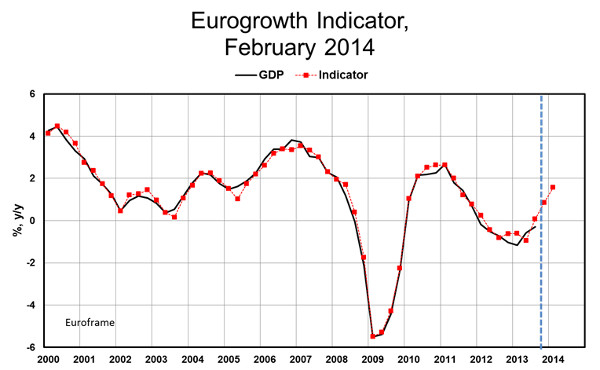The Eurogrowth Indicator, calculated by the Euroframe group in the beginning of February, points to fairly strong growth of 0.6 per cent in the Euro Area in the fourth quarter of 2013 over the previous quarter followed by 0.5 per cent growth in the first quarter of 2014. Compared to the corresponding quarters a year earlier the growth rates are at 0.8 and 1.5 per cent. The estimates have been stable since December, when the first-quarter estimate for 2014 was published for the first time.
The strong growth estimates lean on a continuing improvement in industrial confidence since spring 2013, save a decline in January 2014. Simultaneously the negative effect from household confidence on the estimates has steadily decreased supporting the growth of the estimates as well. The effect of construction confidence is rather neutral, though the confidence indicator deteriorated strongly in January.
The real euro-dollar exchange rate affects the indicator with a lag of two quarters and has remained rather neutral. However, the appreciation of the euro vis-à-vis the US dollar last autumn will obviously dampen the Indicator in the second quarter.
All in all, the Eurogrowth Indicator suggests a good start for the year 2014 that could help in getting the Euro Area back to a sustainable growth path.
There are downside risks, however. High unemployment in the Euro Area combined with the still unsettled Euro Area crisis and weakening prospects in emerging markets as well as recent stock market turbulence could weaken confidence in the Euro Area and consequently the Indicator estimates.
February 5, 2014
Paavo Suni
The Research Institute of the Finnish Economy, ETLA
